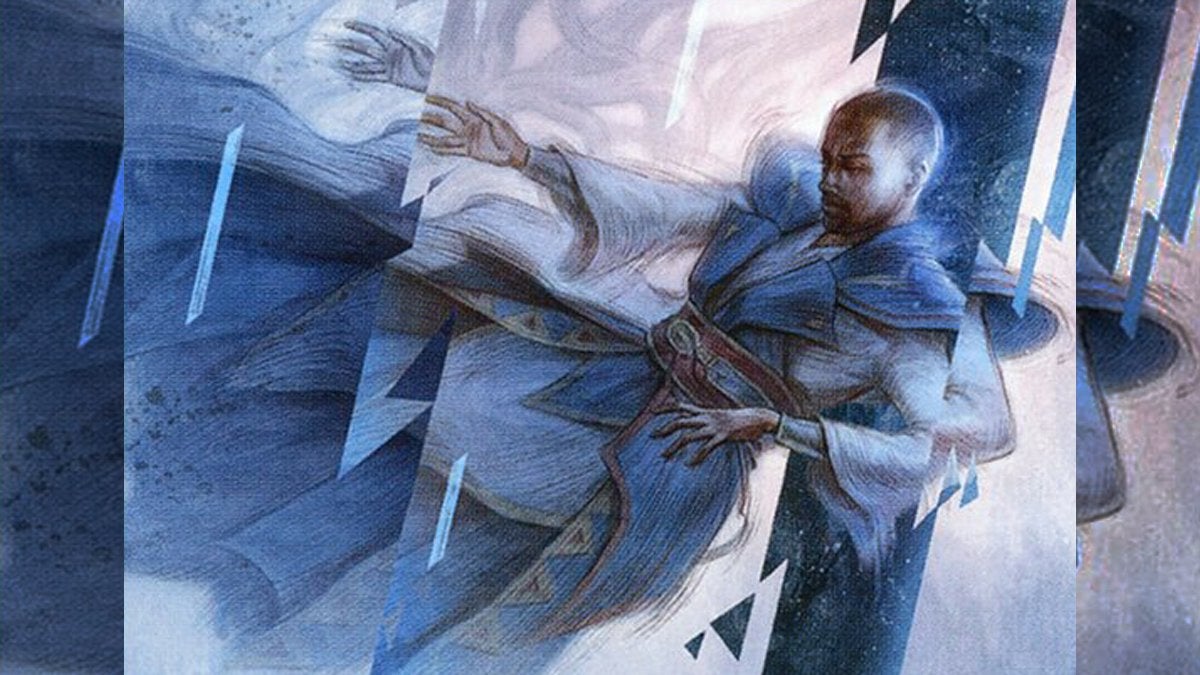![]() Key Takeaway
Key Takeaway
Scry is a keyword action that lets you draw cards, look at them, and then place them back on top or on the bottom of your deck in any order you like. Also, you can choose where the scried cards go in any ratio you like as well. The number beside “Scry” on a card (Scry 1, Scry 2, etc.) determines at how many cards from the top of your deck you can look.
For example: if you Scry three cards, you can place one on top of your deck and send two to the bottom. Alternatively, you can place all three cards on top of your deck in any order you choose.
Gain a great advantage by manipulating your draws with Scry in Magic: The Gathering. Doing so lets you control what cards you add to your hand next—which is the peak of planning. Such a strategy helps to negate poor draws due to bad luck and much more.
Table Of Contents
What Is Scry?
When you see “Scry” on one of your cards followed by a number (Scry 1, Scry 2, etc.), this means you can look at the top card(s) of your deck. Then, once you’ve looked at them, you can place them back on top of your deck or on the bottom in any order you like—or both! The number next to “Scry” determines how many cards you can view from the top of your deck.
An Example of How Scry Works
Let’s examine a creature card that has the Scry action on it. Say, for example, you put an Augury Owl into play. Once it’s placed on the battlefield, its effect (Scry 3) activates.
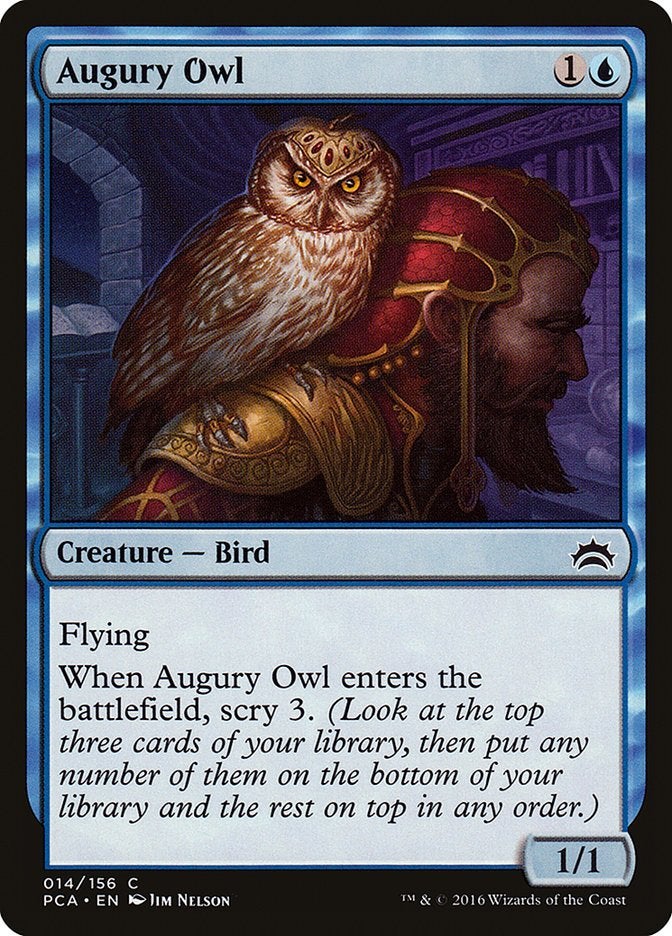
After you look at the top three cards of your deck, you can place them back on top of your deck or on the bottom in any order you like. If you like what you see and the order in which you see it—you can put the cards back as they were.
Alternatively, if you don’t like your next three cards, you can place them all on the bottom of your deck. Or, if you want to draw one of those three cards next turn—but the other two are useless right now—place that one useful card on top and the other two on the bottom.
There’s a lot of flexibility when it comes to scrying, so do as you please when placing cards back into your deck!
How to Use Scry
To make the best use of Scry in Magic: The Gathering, you want to use it as often as possible to alter what cards you draw. This is especially useful in a lot of control decks and combo decks that need to draw specific cards at specific times to set up their best strategies.
With that said, there are a lot of permanents out there that make use of Scry in ways besides simply letting you adjust what cards you draw next. Scry can appear on some cards as a nice bonus effect while, at other times, Scry shows up on a card in a way that lets you use it as part of a bigger combo.
Deck Searching With Scry
In addition to manipulating what cards you can draw next, repeatedly scrying can help you search for a specific card. On the best permanents for such strategies, there is text that allows you to Scry multiple times.
For example, let’s check out the creature card Cavalier of Gales. When this creature enters the battlefield, it has a pseudo-scry effect: draw three cards and then put two cards from your hand on top of your deck in any order.
You can’t put cards on the bottom of your deck but you can put cards you didn’t draw on top of your deck: a great trade-off. Most importantly, since you’re drawing three and putting back two, you’re essentially drawing one card outside of your draw step.
Also, Cavalier of Gales has a true Scry action on it as well that activates when it dies. Though, when it dies, you get to shuffle it back into your deck instead of sending it to your graveyard. This means that you have a chance of drawing Cavalier of Gales on the same turn it dies—albeit a small chance.
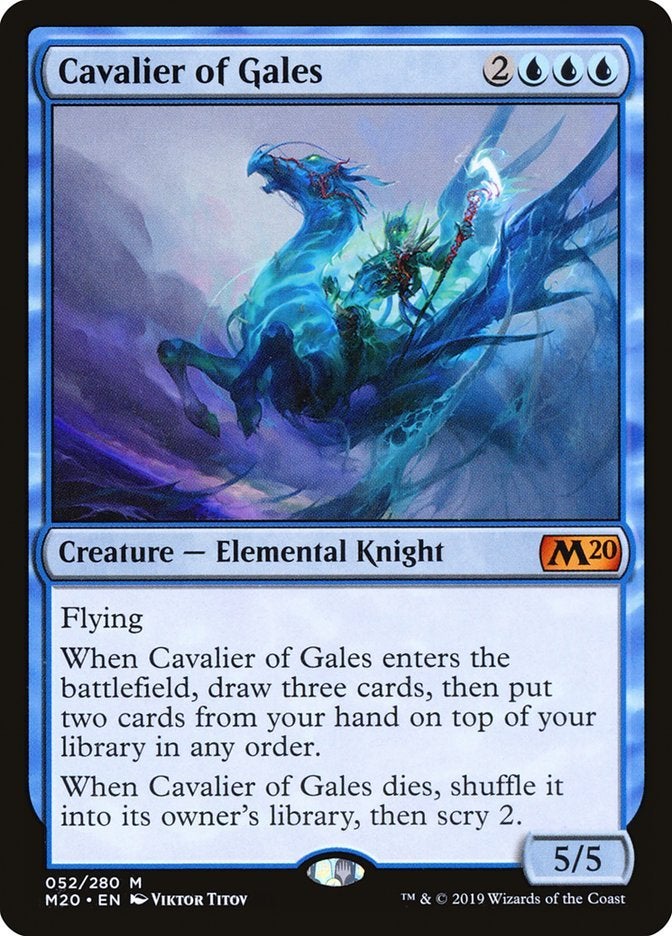
Now, imagine if you have Cavalier of Gales and other cards that Scry in your deck. That’s a lot of draw manipulation! With enough scrying, you can search for specific cards often enough to control every draw step in any given game.
Buffing Creatures With Scry
Besides being a part of draw-related combos, you can use Scry in Magic: The Gathering for improving the offense and defense of your creatures. A great example of this is the creature card Celeborn the Wise.
When you attack with one or more elf creature(s) (including Celeborn the Wise: a 3/3 Elf Noble), Celeborn the Wise allows you to Scry one card. Also, when you Scry, Celeborn the Wise gets a +1/+1 counter (this turn only) for every card you Scry.
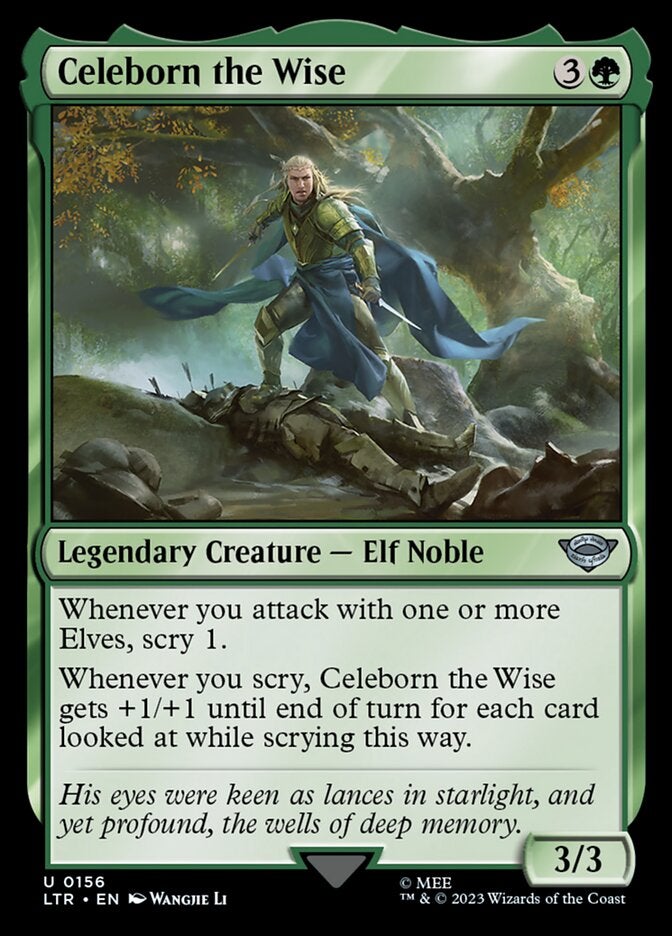
In the simplest usage of this card during combat, you can attack with Celeborn the Wise and it lets you Scry during the combat phase. This, in turn, makes Celeborn the Wise a 4/4 card for the rest of your turn.
However, you can significantly increase Celeborn the Wise’s power and toughness by scrying with other cards before beginning the combat phase on your turn. For example, if you’re able to Scry five cards, Celeborn the Wise temporarily becomes an 8/8 monster!
Scry With Non-Creature Cards for Tons of Other Effects
Scry appears on many sorcery and instant cards. Despite always being a useful action, Scry sometimes appears as more of a bonus action that accompanies another action that’s more useful.
You can use instants like Chain to Memory to weaken an attacking creature and Scry at the same time or those like Council’s Deliberation to draw cards outside of the draw step when you Scry. Both of these are handy tricks in many situations—flexibility can be formidable!
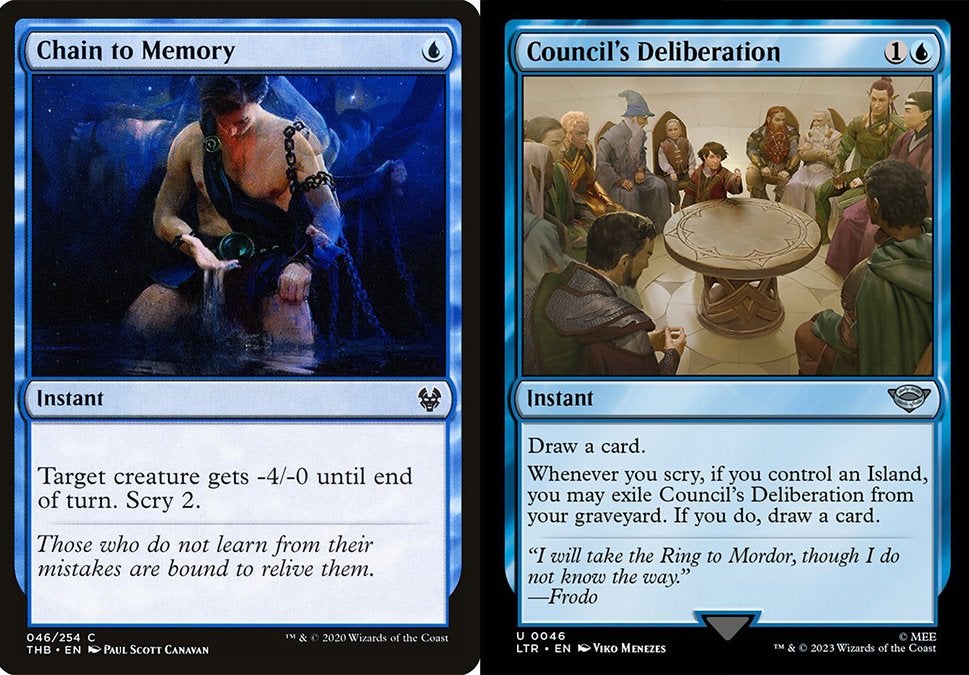
How to Counter Scry
If you’re facing off against a deck that is liberally using Scry, there are a couple of things you can do to halt your opponent’s hand. Mainly, you want to force your adversary to shuffle their deck before their draw step or straight-up counter the effects of a Scry action.
Shuffle the Scryer’s Deck
Few things can ruffle an opponent like a forced shuffle! Especially when they’ve used some mana to arrange the top of their deck in a particular way. Permanents like Soldier of Fortune are a convenient way to mess with a scryer or shuffle your own deck for other reasons.
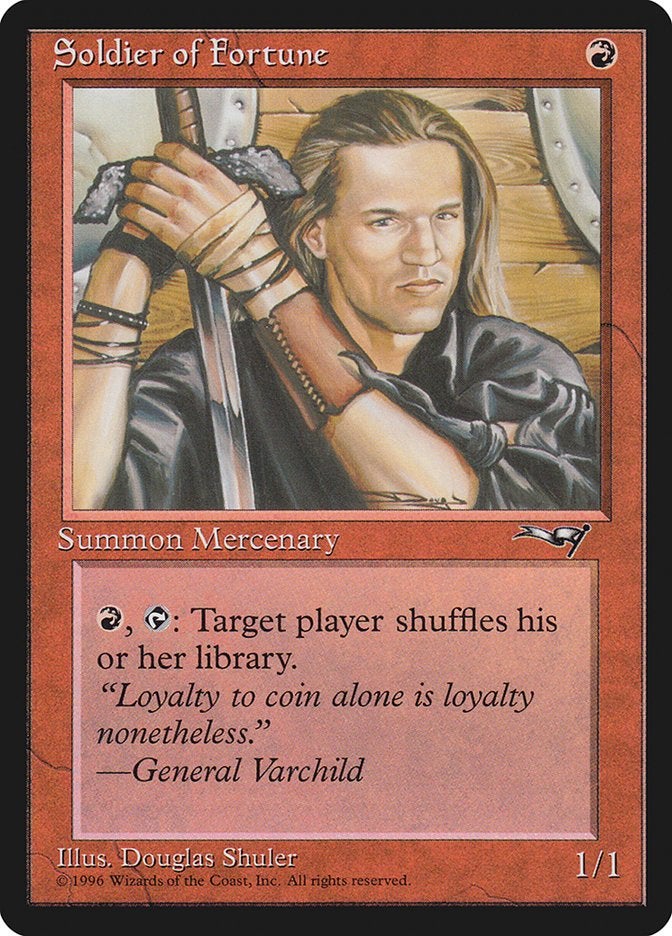
Counter the Scry
If you’re more inclined to decline an opponent’s actions, you can use cards that directly counter card effects. This is the most efficient way to stop a Scry in Magic: The Gathering. When your opponent plays a card that usually lets them Scry, play an instant like Disallow to stop them dead in their tracks.
This both prevents them from manipulating their next draw as well as means they just wasted some mana trying to do so. It can be fun to shut down an opponent’s strategies before they can develop into threats. Well, fun for you; it’s not much fun for your foe.
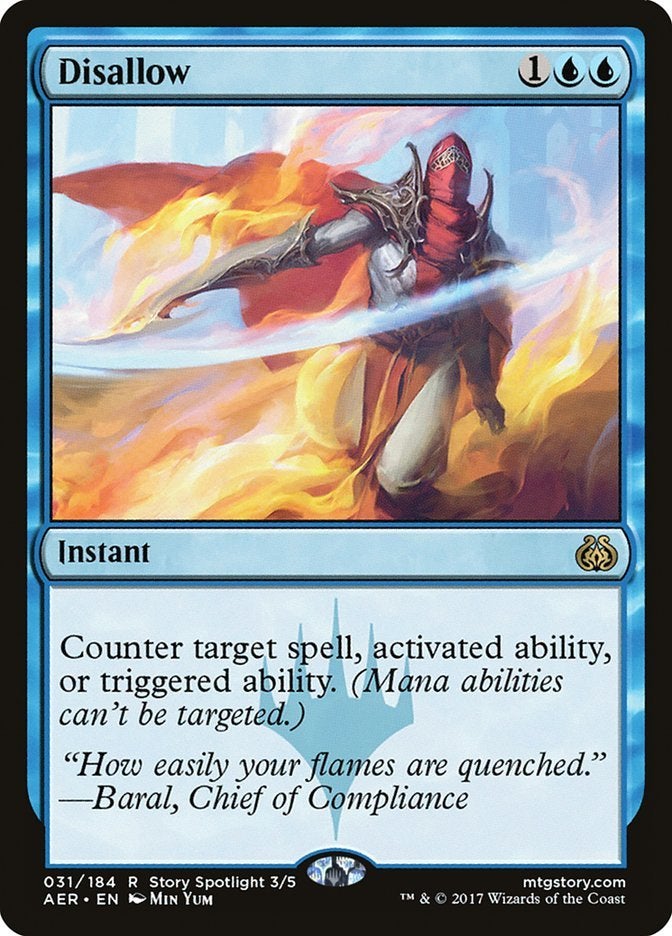
Use Scry to get better draws and put together big combos! Since this action is a flexible one found on a variety of cards, there’s a lot of potential for crazy plays. What’s more, such strategies usually involve doing multiple things well and can keep your opponent guessing at what you’ll do next. By making your draws predictable, you become unpredictable to your opponent: a recipe for success in a strategic game like Magic: The Gathering.


